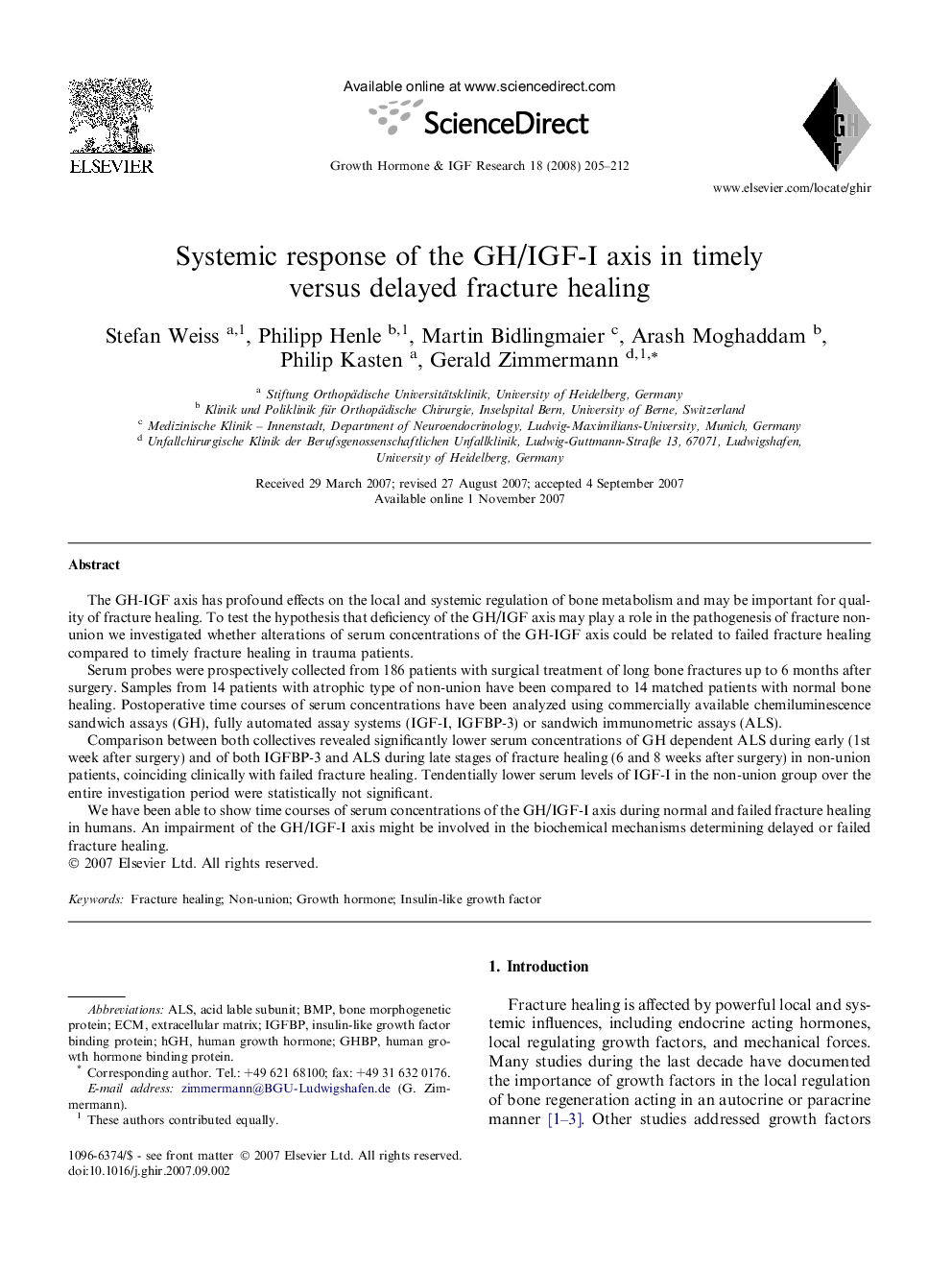| Article ID | Journal | Published Year | Pages | File Type |
|---|---|---|---|---|
| 2803339 | Growth Hormone & IGF Research | 2008 | 8 Pages |
The GH-IGF axis has profound effects on the local and systemic regulation of bone metabolism and may be important for quality of fracture healing. To test the hypothesis that deficiency of the GH/IGF axis may play a role in the pathogenesis of fracture non-union we investigated whether alterations of serum concentrations of the GH-IGF axis could be related to failed fracture healing compared to timely fracture healing in trauma patients.Serum probes were prospectively collected from 186 patients with surgical treatment of long bone fractures up to 6 months after surgery. Samples from 14 patients with atrophic type of non-union have been compared to 14 matched patients with normal bone healing. Postoperative time courses of serum concentrations have been analyzed using commercially available chemiluminescence sandwich assays (GH), fully automated assay systems (IGF-I, IGFBP-3) or sandwich immunometric assays (ALS).Comparison between both collectives revealed significantly lower serum concentrations of GH dependent ALS during early (1st week after surgery) and of both IGFBP-3 and ALS during late stages of fracture healing (6 and 8 weeks after surgery) in non-union patients, coinciding clinically with failed fracture healing. Tendentially lower serum levels of IGF-I in the non-union group over the entire investigation period were statistically not significant.We have been able to show time courses of serum concentrations of the GH/IGF-I axis during normal and failed fracture healing in humans. An impairment of the GH/IGF-I axis might be involved in the biochemical mechanisms determining delayed or failed fracture healing.
